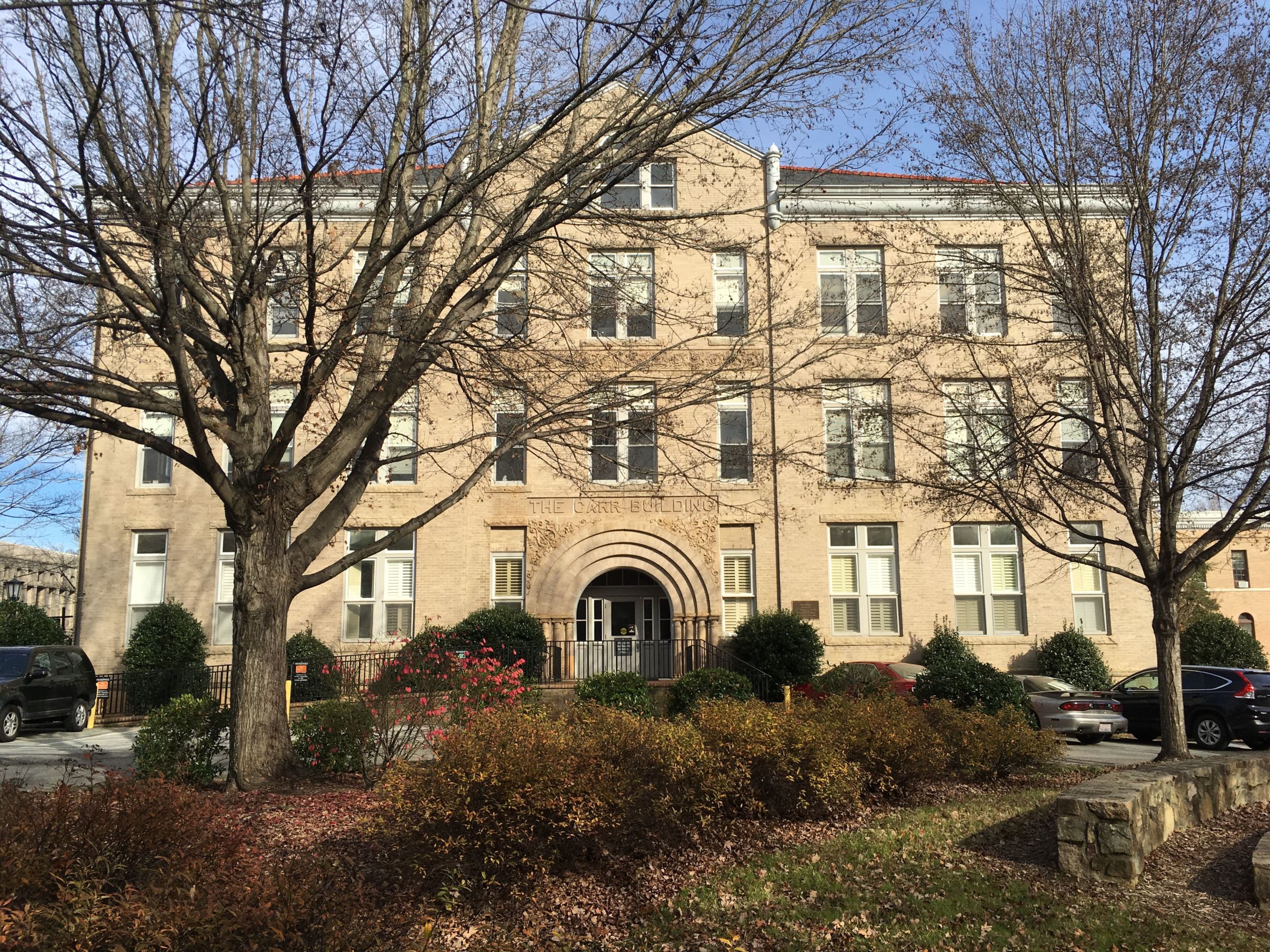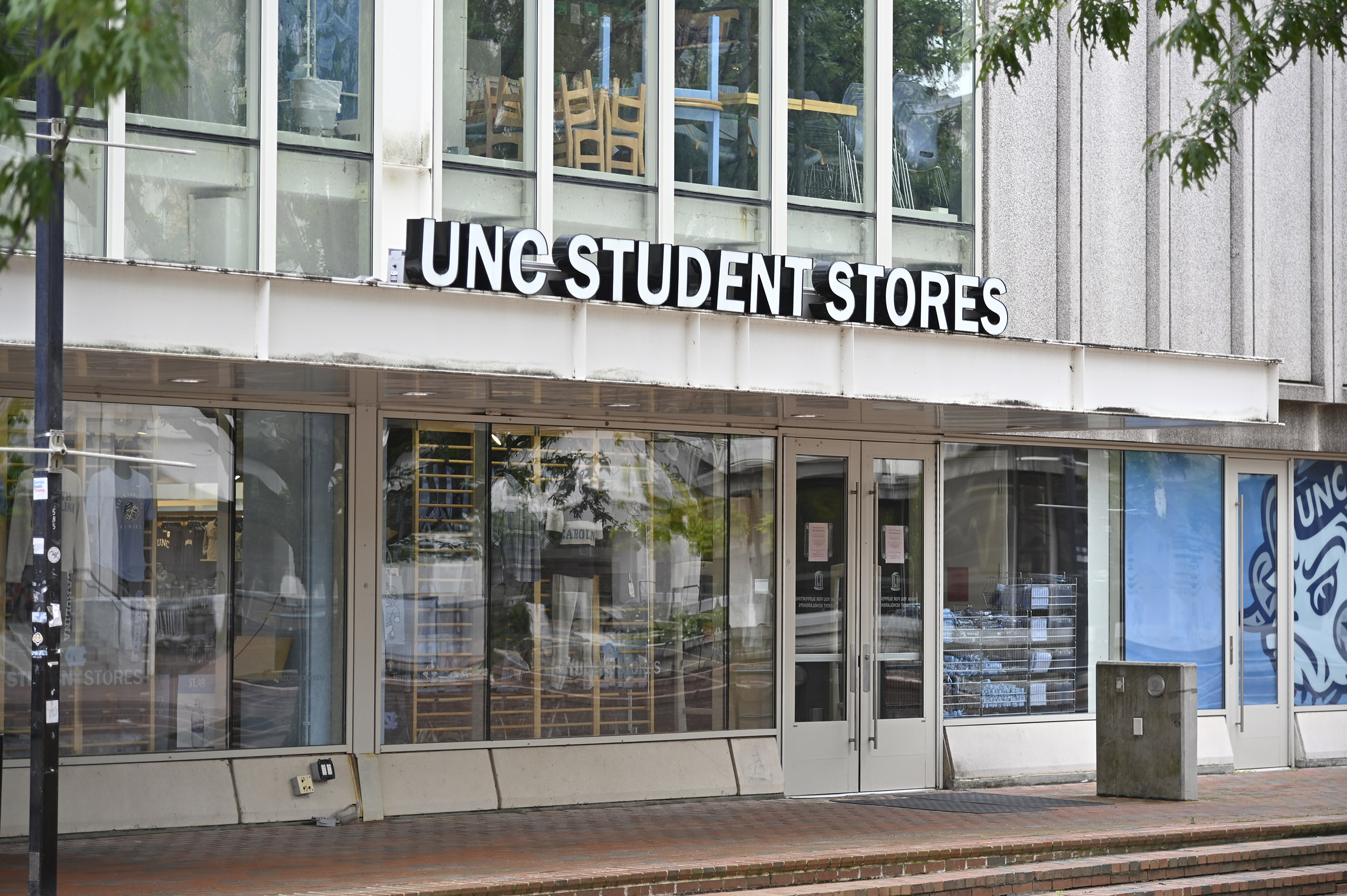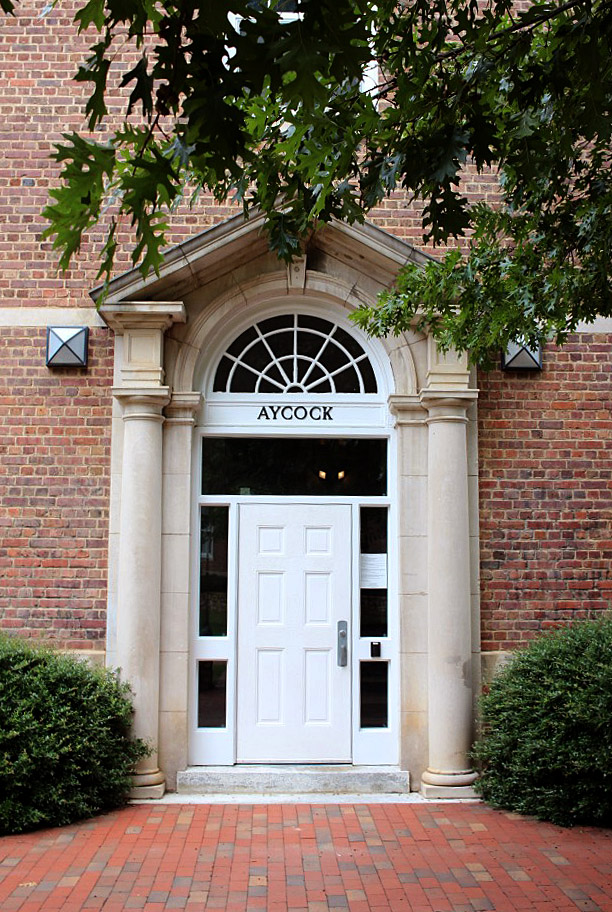Building Name Removal Policy Approved; Changes Could Come Soon
Posted on July 16, 2020
Trustees made it clear during the lifting of the moratorium that the removal policy will target white supremacists. (File photo)
The UNC trustees on Thursday approved a policy for removal of names from campus buildings and public spaces, and a recommendation for four removals could begin moving through the process soon.
Chancellor Kevin Guskiewicz said he already is gathering a committee to consider the merits of a proposal by UNC’s Commission on History, Race and a Way Forward to scrub the names from Aycock and Ruffin residence halls, Carr Building and Daniels Student Stores.
Trustees Chair Richard Stevens ’70 (’74 MPA, ’74 JD) said he would call a special meeting of the board — which is not scheduled to meet again until September — if Guskiewicz recommends removals.
The trustees’ vote was 12-1 with John Preyer ’90 voting against.
The policy, a follow-up to the trustees’ decision last month to end a 16-year moratorium on building renamings enacted by the board in 2015, calls for the chancellor to consider written requests for removal for the specific conduct by the namesake that jeopardizes the University’s integrity, mission or values; the character of the named individual and the extent of the harm to the University caused by continuing to honor the namesake; and the strength of the evidence to support the claim of harm.

Ruffin Residence Hall (File photo)
The chancellor then refers the request to a committee made up of alumni, faculty, staff, students and trustees, and uses their input to decide whether to recommend a removal to the trustees, who have the final say. UNC already has a detailed policy for naming buildings and public spaces, to which a removal would be referred.
“We are in the midst of one the most critical times in the history of this University,” Stevens said. “Our Board of Trustees is dedicated to reconciling our campus racial history.”
Other trustees made it clear during the lifting of the moratorium that the removal policy will target white supremacists, spurred by the racial reconciliation movement that has gained momentum following the police killing of George Floyd in Minneapolis on May 25.
“Things have changed. The temperature of the country has changed. This needs to be done,” trustee Teresa Artis Neal ’83, the lone African American member of the board, said in June.
On Thursday, trustee Gene Davis Jr. ’90 (’97 JD) said: “In this moment in the history of our University, our state and our nation, I believe that we are called to be a light in the dark corners in which racism has festered for far too long.” He said the policy would “play a role in the healing of our state and our nation.”
Guskiewicz added, “Establishing a renaming policy will enable us to thoughtfully review recommendations and ensure the people we honor on our campus reflect our values today.”
The names of Julian Carr (class of 1866), Josephus Daniels (class of 1885), Charles Aycock (class of 1880) and Thomas Ruffin have been at the top of lists of white supremacists for whom UNC buildings are named.
UNC Library biographies of them state:
• Aycock led the 1898-1900 drive for white supremacy. One of the Democratic politicians who wrested control of the state from a coalition of white and Black Republicans, he used his oratorical skills to foment resentment of Black people. These Democrats also resorted to violence, particularly in the overthrow of a mixed-race government in a violent coup in Wilmington in 1898. Once in power, Aycock and his associates largely disenfranchised people who were Black through a literacy test and poll tax.
• Carr actively supported the 1890s white supremacy campaign and ran unsuccessfully for the U.S. Senate in 1900 on that platform.
• During Daniels’ earliest days in politics, he supported the white supremacy campaign of 1898, which helped North Carolina’s Democratic Party overthrow an alliance of African Americans and white Republicans to enforce Black disenfranchisement and segregation. Daniels later expressed regret for his role in that event.
• Ruffin served on the N.C. Supreme Court, where he wrote one of the most important decisions in the law of American slavery. His opinion in the decision in State v. Mann (1829) banned the prosecution of masters for mistreating slaves by ruling that “the power of the master must be absolute to render the submission of the slave perfect.” (The dorm also is named for Ruffin’s son, Thomas Jr., who was in the class of 1844.)
In proposing the name removal, commission co-chair and history professor Jim Leloudis ’77 (’89 PhD) said: “We believe these names warrant immediate action. Aycock, Daniels and Ruffin occupied high positions of public trust. These men used their positions to impose and maintain violent systems of racial subjugation. And similarly, Julian Carr was a chief financier of the 1898 and 1900 white supremacy campaigns in North Carolina and the most prominent figure associated with Confederate memorialization on our campus and across this state.

Daniels Student Stores. (Grant Halverson ’93)
“By his admission in 1921 in an interview with The New York Times, he was also a member of the Reconstruction era Ku Klux Klan. In each of those instances, Carr used his wealth and his influence to establish the regime of Jim Crow, which as you know for more than half a century denied Black North Carolinians equal justice and the fundamental rights of citizenship.”
Leloudis signaled that more changes would be proposed. “There are other names on the [UNC] landscape that warrant action.”
Also in July, the chairs of the departments of history, political science and sociology and of the curriculum in peace, war and defense proposed to the Commission on History, Race and a Way Forward that the name of J.G. de Roulhac Hamilton be removed from the 48-year-old building where their departments are based.
Hamilton’s name is on lists of white supremacists for whom campus buildings are named. The department chairs want the building renamed for civil rights activist Pauli Murray, who was descended from enslaved people in Orange County and was denied admission to UNC’s graduate program in sociology in 1938 because she was African American.

Aycock Residence Hall (File photo)
Aycock was governor of North Carolina from 1901 to 1905. The story of Carr’s speech at the 1913 unveiling of UNC’s Confederate monument, in which he boasted about having whipped a Black woman in the street in Chapel Hill, has been widely told. Daniels used his newspaper, The News and Observer, to foment the movement that in 1898 led to the coup in Wilmington. Ruffin served two terms as a UNC trustee.
Aycock’s name has been removed from buildings at Duke and East Carolina universities and UNC-Greensboro. A statue of Daniels recently was removed from a public square in Raleigh at the behest of his family; a short time later, N.C. State University removed his name from a building.
The library’s biographies identify 10 namesakes associated with white supremacy, though lists compiled by students who researched the issue and racial reconciliation activists are longer — some of them include all who were enslavers.
Only one name has been taken off a campus building. The trustees in 2015 voted to remove the name of William L. Saunders (class of 1854), a leader of the Ku Klux Klan in the state, from a classroom building.
The Commission on History, Race and a Way Forward was established in 2019 and given $5 million on the day Guskiewicz became chancellor in December. Its mission is to study the University’s complicated racial history and recommend ways the University can build a dialogue with the campus community and the public about UNC’s past.
